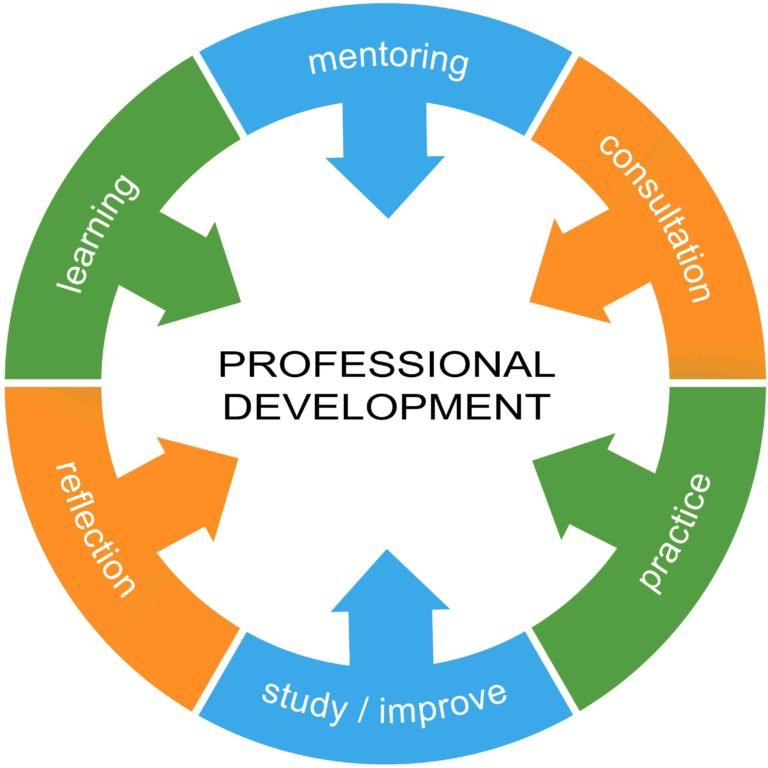
Introduction
In the ever-evolving landscape of corporate success, professional development training emerges as a key factor in enhancing team dynamics. This type of training goes beyond individual skill enhancement; it plays a pivotal role in unifying teams, fostering a culture of continuous learning, and driving overall business success. In this comprehensive exploration, we delve into how professional development training benefits not just the individual, but the entire team, shaping the dynamics that are crucial for a thriving business environment.
Table of Contents:
- Introduction to Professional Development Training
- The Impact of Professional Development on Team Dynamics
- Benefits of Professional Training for Teams
- Synergising Professional Development with Leadership
- The Role of Professional Training in Corporate Success
- Strategies for Implementing Effective Professional Development
- Case Studies: Real-World Examples of Successful Professional Development
- Conclusion
The Impact of Professional Development on Team Dynamics
Professional development training is more than just an avenue for individual growth; it’s a catalyst for enhancing team dynamics. The following points illustrate how such training impacts team functionality and cohesion:
- Enhanced Communication: Skills learned in professional development courses, especially those focusing on communication, lead to clearer and more effective exchanges within the team, reducing misunderstandings and streamlining workflows.
- Respect for Diverse Skills: As team members develop varied skills, there’s a growing appreciation for different perspectives and approaches, fostering a culture of respect and inclusivity.
- Aligned Goals and Visions: Training sessions often serve to align individual goals with the broader objectives of the team and the organisation, ensuring a unified direction.
Benefits of Professional Training for Teams
The ripple effect of professional development on a team is profound, offering numerous benefits that contribute to a more dynamic and productive work environment:
- Boosted Morale and Engagement: Ongoing development opportunities demonstrate a company’s investment in its employees, leading to increased morale and a deeper sense of engagement.
- Improved Problem-Solving Abilities: Diverse training equips teams with a broader range of problem-solving tools, fostering innovation and creativity.
- Adaptability and Growth Mindset: Continuous learning encourages teams to embrace change and adaptability, vital in today’s fast-paced business world. Learn more about why it is important here.

Synergising Professional Development with Leadership
Integrating professional development with leadership training is crucial for maximising its impact on team dynamics:
- Empowering Leaders: Leadership-focused professional development empowers leaders to effectively guide their teams, leveraging new skills and strategies learned. Are you looking for personal leaderships workshops? Take a look at the following options.
- Enhancing Leadership Skills: Programs like “Leadership Workshops: Key to Effective Team Management” enrich leaders’ abilities to motivate, inspire, and align their teams towards common goals.
- Creating Role Models: Well-trained leaders serve as role models, setting a precedent for continuous learning and improvement within the team.
The Role of Professional Training in Corporate Success
Professional development training is a cornerstone in the foundation of a successful and resilient business:
- Cultivating a Learning Culture: A culture that values ongoing learning and development is likely to be more innovative and agile.
- Driving Business Growth: As teams become more efficient and skilled, the business is better positioned for growth and adaptation to market changes.
- Enhancing Team Cohesion: Training shared across team members fosters a sense of unity and shared purpose, critical for long-term success.
Strategies for Implementing Effective Professional Development
Effectively implementing professional development training is key to reaping its benefits. Here are strategies that can enhance the effectiveness of such programs:
- Tailored Training Programs: Customise training to meet the specific needs and goals of the team. Incorporating activities like The Hand Project, which blend skill development with meaningful, hands-on experiences, can significantly enhance the learning process.
- Incorporating Diverse Learning Methods: Utilise a mix of learning methods including workshops, seminars, and practical activities to cater to different learning styles.
- Measuring Impact and Feedback: Regularly assess the effectiveness of training programs through feedback and performance metrics, ensuring continual improvement and relevance.
The Role of The Hand Project in Professional Development
The Hand Project serves as a perfect example of how professional development can be both enriching and socially impactful. By engaging in activities such as building prosthetic hands, team members not only develop practical skills but also experience teamwork, empathy, and the satisfaction of contributing to a significant cause. This unique blend of professional skill development with humanitarian efforts demonstrates the depth and breadth of impact that well-designed professional development initiatives can have on team dynamics.
The Role of Professional Training in Corporate Success
Professional development is a vital ingredient in the recipe for corporate success, fostering a workforce that is skilled, adaptable, and cohesive:
- Building a Resilient Workforce: Continuous learning equips teams with the skills to adapt to industry changes and challenges, making the business more resilient.
- Enhancing Productivity: Skilled employees are more efficient and productive, directly impacting the bottom line.
- Attracting and Retaining Talent: A strong focus on professional development is attractive to potential employees and helps retain current staff by offering career growth opportunities.

Case Studies: Real-World Examples of Successful Professional Development
Illustrating the impact of professional development training, case studies such as those found in “Effective Strategies for Management Team Building: A Comprehensive Guide” showcase how businesses have successfully implemented training programs to enhance team dynamics and achieve corporate success.
To conclude, professional development training is a vital component in cultivating a strong, dynamic, and cohesive team. It goes beyond individual skill enhancement to foster an environment of continuous growth, teamwork, and shared success. From enhancing communication and problem-solving skills to fostering a culture of mutual respect and collaboration, the benefits of professional development permeate every aspect of team dynamics.
Reflecting on The Hand Project’s Influence
The Hand Project stands as a prime example of the transformative power of well-integrated professional development initiatives. Activities like the prosthetic hand building workshop not only provide practical skills but also instill a sense of unity and purpose. Such initiatives demonstrate that professional development, when thoughtfully executed, can extend its impact far beyond the confines of traditional training, contributing to both personal growth and the greater good.
For more insights into how leadership and team building contribute to successful professional development, explore the resources available at”Leadership Workshops: Key to Effective Team Management” and “Building a Better Business: The Role of Team Building in Corporate Success”
Are you ready to elevate your team’s dynamics and harness the full potential of professional development training? Reach out to us to explore how our tailored training programs, including innovative initiatives like The Hand Project, can benefit your team and your business. Visit our Contact Page for more information and to start your journey towards enhanced team dynamics and corporate success.
Frequently Asked Questions (FAQs)
Q1: What is professional development training, and how is it different from standard training programs? A1: Professional development training focuses on enhancing an individual’s skills and knowledge for their professional growth and efficiency. Unlike standard training programs that are often job-specific, professional development encompasses a broader range of skills, including leadership, communication, and strategic thinking, which benefit team dynamics as a whole.
Q2: How does professional development training benefit team dynamics? A2: Professional development training fosters a collaborative learning environment, improves communication, and aligns individual goals with team objectives. This leads to enhanced team cohesion, better problem-solving capabilities, and a more harmonious workplace.
Q3: Can professional development training be tailored to specific team needs? A3: Absolutely. Customized professional development programs, such as those offered by The Hand Project, are designed to address the unique challenges and goals of a specific team, making the training more relevant and impactful.
Q4: Are there benefits to including activities like The Hand Project in professional development programs? A4: Yes, incorporating activities like The Hand Project in professional development programs adds a unique and meaningful dimension to training. These activities not only enhance practical skills but also foster teamwork, empathy, and a sense of shared purpose, which are crucial for strong team dynamics.
Q5: How can a company measure the success of its professional development training? A5: The success of professional development training can be measured through various metrics such as improved team performance, increased employee engagement and satisfaction, enhanced communication within the team, and feedback from employees. Regular reviews and assessments can help in evaluating the effectiveness of the training and making necessary adjustments.
